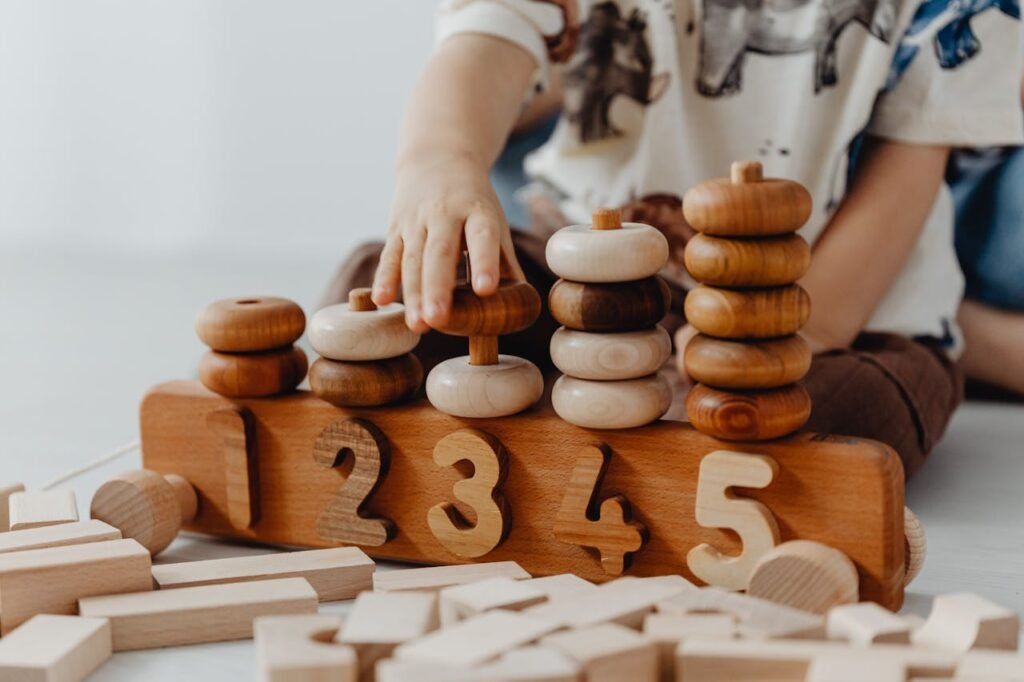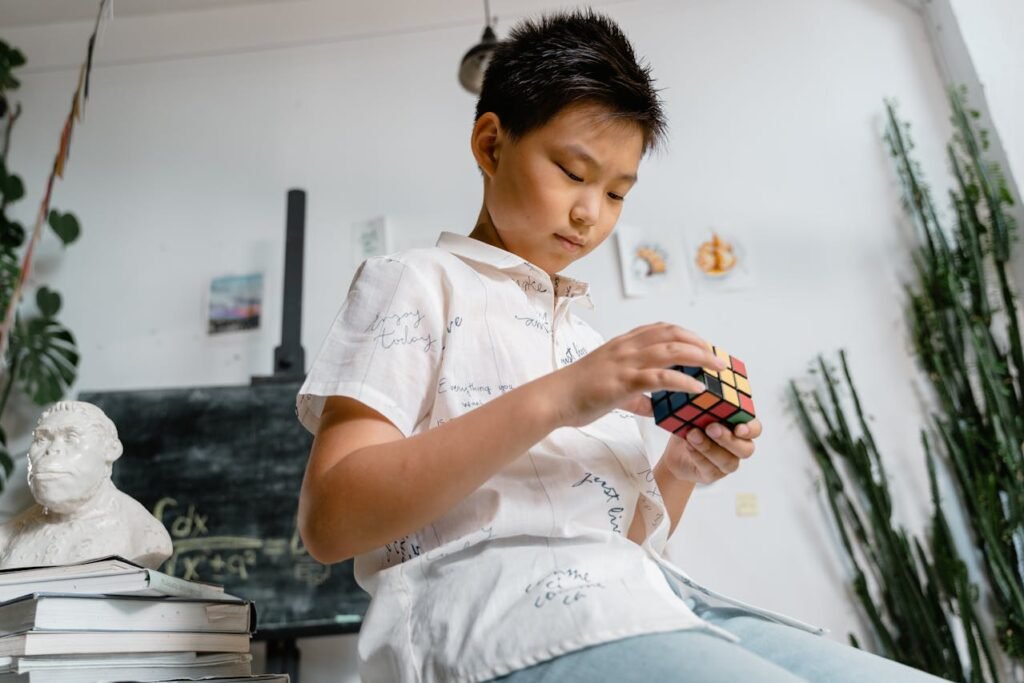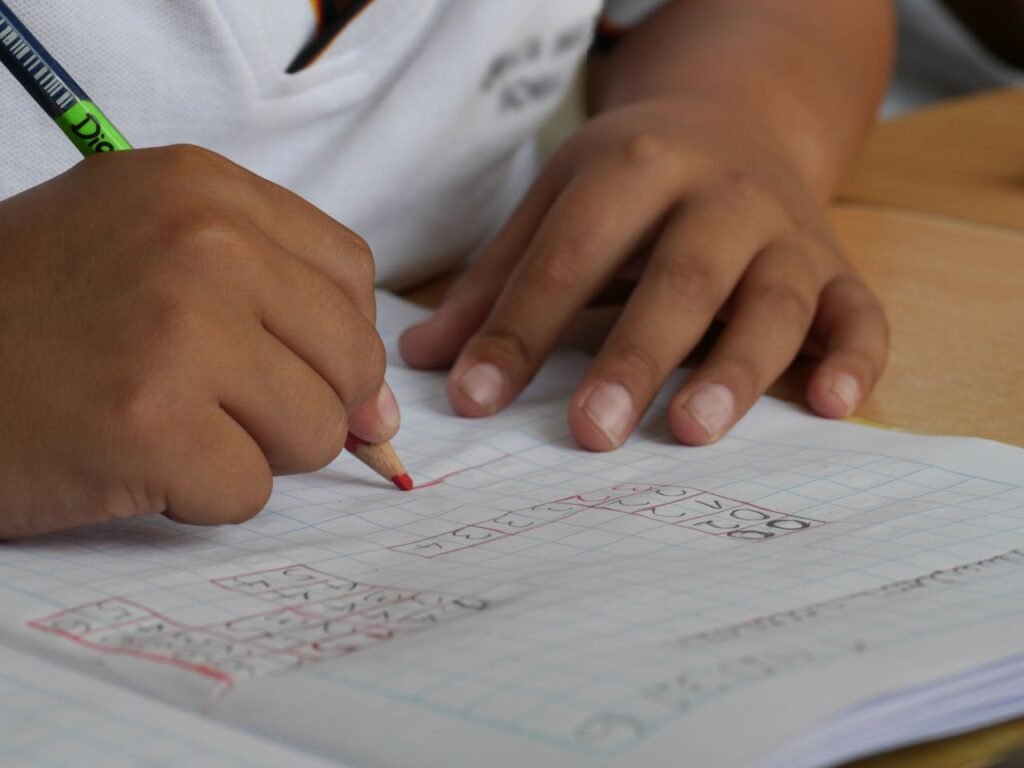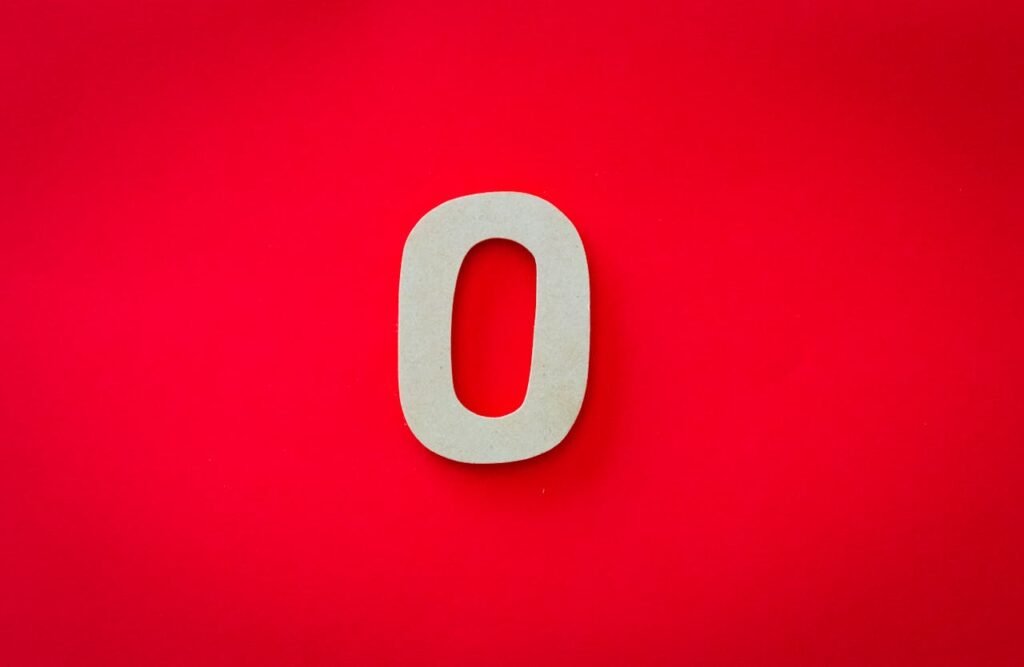Have you ever wished you could do math in your head without grabbing a pencil or calculator? You’re not alone. Lots of kids—and even adults—feel nervous when numbers come up quickly. But here’s some good news: with the right strategies, anyone can get better at mental math.
Mental math isn’t about being fast. It’s about thinking smart. It means breaking down problems into small, easy steps that your brain can handle quickly. And once you learn how to do it, it can make math feel way less scary—and way more fun.
At Debsie, we teach mental math as a superpower that grows with practice. Whether you’re five or fifteen, there’s a simple way to start thinking with numbers in your head. In this article, you’ll discover real, friendly ways to practice mental math—and actually enjoy it.
Ready to train your math brain?
What Is Mental Math—and Why Does It Matter?
Mental math means solving problems in your head—without writing anything down. You don’t need a calculator. You don’t even need paper. It’s just you and your brain, thinking through the steps.
But here’s the truth: mental math isn’t magic. It’s not something only “math geniuses” can do. It’s something you learn by using simple steps again and again—until they become a part of how you think.
Why is this important? Because mental math is everywhere.
You use it when you’re at the shop and want to know if you have enough money.
You use it when you’re splitting snacks between friends.
You use it when you’re checking if you got the right change or if a deal is really a deal.
Mental math helps you move through the world with confidence. It makes you faster, smarter, and less nervous when numbers show up.
At Debsie, we believe the best time to start mental math is right now. Whether you’re five years old and learning to count, or fifteen and solving algebra, there are mental tricks that can help you think clearly and quickly.
Strategy 1: Start With Friendly Numbers

Let’s start with something very simple. Our brains like friendly numbers—numbers that are round, easy, and clean. Think of 10, 50, 100, or anything that ends in zero. These numbers are much easier to work with.
So when you’re doing mental math, change the problem to a friendly one, then fix it afterward.
Let’s say you’re solving 49 + 23. That feels a little awkward at first, right?
But what if you thought of it this way:
49 is very close to 50.
So you can say:
50 + 23 = 73
But wait—you added 1 extra (since 49 is 1 less than 50).
So just subtract 1:
73 – 1 = 72
That’s the answer!
This trick is called compensation. You make the number easier, solve it, then adjust.
Another example:
99 + 38
You can change 99 to 100.
100 + 38 = 138
Now subtract 1 → 137
It’s fast. It’s neat. And it feels good when it works.
At Debsie, we teach this through mini-games and quick challenges. Kids compete to find “easy paths” to answers using friendly numbers. It trains their brain to look for smart ways instead of trying to push through a hard one.
Friendly numbers are the doorway to clearer thinking. Once you start using them, you’ll never go back to doing math the hard way.
Strategy 2: Break It Down (Decompose the Number)
Big numbers can look scary. But what if you could break them into smaller pieces—like building blocks? That’s what this strategy is all about. When you break a number into parts, your brain finds it easier to solve the problem in your head.
This is called decomposing. That’s a fancy word for “taking something apart.” It’s like pulling a LEGO tower into smaller chunks so you can work with one piece at a time.
Let’s try it with this problem:
46 + 28
Instead of doing it all at once, break the second number (28) into 20 and 8. Now solve it like this:
46 + 20 = 66
66 + 8 = 74
Done! No need to write anything down. Just go step by step in your head.
You can do this with subtraction too. Try:
93 – 47
First, break 47 into 40 and 7.
93 – 40 = 53
53 – 7 = 46
That’s your answer!
At Debsie, we use number cards, color tiles, and “split & stack” games to help kids learn how to break numbers apart without fear. Once they get used to seeing numbers as pieces, they start solving faster and smarter.
Why This Works
Our brains don’t like juggling lots of numbers at once. But we’re really good at solving little steps one at a time. Decomposing takes a hard problem and turns it into something you already know how to do.
It also helps you build flexible thinking—which means being able to look at a number in more than one way. A child who sees 28 not just as “twenty-eight,” but as “20 and 8” or even “30 minus 2,” is building a powerful math brain.
And flexible thinkers become confident problem-solvers.
Strategy 3: Think in Tens

This strategy works especially well for younger children (ages 5 to 9), but older students also use it all the time.
Tens are like anchors in math. They’re easy to count with, and they help you keep track of numbers quickly.
Let’s say you’re adding 7 + 6.
Instead of counting up slowly—“8, 9, 10, 11, 12, 13”—try this:
You know 7 + 3 = 10
So take 3 from the 6 → you’re left with 3
Now 10 + 3 = 13
Boom. Done in seconds.
At Debsie, we call this “Make Ten First.” Kids learn to spot when they’re close to ten, build that ten first, and add what’s left. It becomes like muscle memory. The more they do it, the faster and more natural it feels.
Thinking in tens is a lifelong math skill. You’ll use it in shopping, money math, estimating, and even in higher-level algebra later on.
Strategy 4: Picture It on a Number Line
Some kids don’t just “hear” math in their heads—they need to see it. That’s where the number line comes in. Even if you don’t draw it out, you can picture it in your mind. This helps you jump forward or backward easily when solving problems.
Let’s say you’re solving 56 + 17. In your mind, picture a number line starting at 56.
First, add 10 → now you’re at 66
Then add 7 more → you land at 73
That’s it! You just solved 56 + 17 by “jumping” along the number line.
The same works for subtraction. Try 82 – 14:
Start at 82
Take away 10 → now you’re at 72
Take away 4 → now you’re at 68
Done!
This trick works really well for kids who are visual learners. At Debsie, we use real number lines on the screen and in printable practice games. As children grow, they learn to build a number line in their mind and solve without needing anything in front of them.
Why It Helps
The number line gives kids a sense of direction. It shows them whether they’re going forward (adding) or backward (subtracting). And most importantly, it builds place value understanding. Kids see that jumping by 10 is different from jumping by 1. They learn that tens and ones behave in their own ways.
It’s also a gentle way to learn estimation. Even if you don’t land on the perfect answer, you’re often close—and that’s a helpful skill in everyday life.
Strategy 5: Use Doubles and Near-Doubles

This is a favorite for many younger learners. Doubles are math facts like:
- 2 + 2
- 3 + 3
- 5 + 5
- 8 + 8
These are easy to remember—and once you know them, they help you solve problems quickly.
Let’s say you know 6 + 6 = 12.
So what’s 6 + 7?
That’s just one more than 6 + 6!
So 6 + 7 = 13
Or what’s 8 + 7?
Well, 7 + 7 = 14
Add one more → 15
These “near doubles” help you skip the counting and use something you already know.
At Debsie, we play fast-paced games where kids have to “spot the double” or “find the near-double” in a math puzzle. It’s like a brain workout—but fun! Over time, they get faster at doing it in their head without even thinking.
Why Doubles Work
Doubles are strong memory facts. They stick. And when kids connect them to new facts, they start building math understanding that’s deep, not just memorized.
It’s one thing to remember 7 + 8 = 15. It’s another to know why—because 7 + 7 = 14, and 8 is one more.
That’s the power of mental math. It builds a brain that understands, not just repeats.
Strategy 6: Estimation—Getting Close on Purpose
Mental math doesn’t always mean getting the exact answer. Sometimes, it’s just about getting close enough—and doing it fast. That’s where estimation comes in.
Estimation means making a smart guess that’s near the real answer. You round the numbers to something easier, solve that, and use the estimate to guide your thinking.
Let’s say you’re solving 198 + 324.
That’s hard to do in your head, right? But what if you round?
198 rounds to 200
324 rounds to 320 (or even 300)
Now try:
200 + 300 = 500
or
200 + 320 = 520
Your brain just figured out that the answer is somewhere around 520. That’s good enough for a quick decision!
At Debsie, we show kids how to use estimation for everyday things:
“How many people are in the room?”
“Do you have enough money for both toys?”
“Is your answer way too high or too low?”
When they learn to estimate well, kids start to trust their thinking. They know they’re in the right range, even if they don’t have time (or need) to calculate the exact number.
Why Estimation Matters
Estimation helps you:
- Make quick decisions
- Check if an answer makes sense
- Catch mistakes
- Stay calm when the numbers get big
It’s also a great way to double-check your math. If you solve a problem and get an answer like 2,738, but your estimate was around 800, you know something went wrong. Estimation becomes a tool to self-correct—which builds independence and confidence.
We often remind students at Debsie: “It’s okay to be close. Being close is smart.” And that gives them freedom to try, even when they’re not 100% sure.
Strategy 7: Think in Chunks

Thinking in chunks is just what it sounds like—grouping numbers into parts that are easier to handle.
Say you’re solving 23 + 46.
Instead of adding all at once, break 46 into 40 and 6:
23 + 40 = 63
63 + 6 = 69
Or in a harder example:
156 + 288
Break 288 into 200, 50, and 38
156 + 200 = 356
356 + 50 = 406
406 + 38 = 444
You solved it in parts—chunks—one piece at a time.
At Debsie, we call this “chunking it down.” It’s like building math stairs: you step up slowly, not in one giant leap. Kids find this method super helpful, especially when doing multi-step problems or working without a calculator.
Why It Works
Chunking keeps your brain from feeling overwhelmed. It teaches kids to slow down, think in order, and build their answer piece by piece.
It’s also a gentle way to practice mental organization, which helps not just in math, but in reading, writing, and even decision-making.
Strategy 8: Skip Counting With Rhythm
Skip counting means counting by 2s, 5s, 10s, or other regular steps instead of by ones. It’s one of the fastest ways to build multiplication and mental math fluency.
Instead of solving 5 × 6 by doing 5 + 5 + 5 + 5 + 5 + 5, you can count by fives:
5, 10, 15, 20, 25, 30 → done!
At Debsie, we turn this into rhythm games, songs, or even clapping patterns. Younger kids learn skip counting by moving their bodies. Older kids apply it to multiplication and division problems.
Once you’re good at skip counting, multiplying becomes a breeze. And when you’re confident with that, you’ll start to recognize patterns and number families—all key to stronger math skills.
Strategy 9: Think Backwards (Use Inverse Operations)
This is a powerful skill for older kids (ages 9+), but younger kids can start early too. If a problem feels too hard, sometimes you can solve it backwards.
Let’s say the question is:
“What number plus 7 gives 19?”
If that feels tricky, flip it:
“19 minus 7 equals what?”
Now you just subtract:
19 – 7 = 12
So the missing number is 12!
This method uses the idea of inverse operations—addition and subtraction, multiplication and division are opposites. One undoes the other.
At Debsie, we help kids practice this using mystery number games and story problems. They learn that if one direction feels confusing, they can flip it around—and still reach the answer. It’s a powerful tool for building mental flexibility.
Strategy 10: Anchor With Known Facts
Think of this as your math “toolbox.” Some facts you just know because you’ve practiced them—like:
- 5 + 5 = 10
- 10 × 10 = 100
- 25 + 25 = 50
These are your anchors. When you face a new problem, ask: “What do I already know that’s close?”
Say you’re solving 26 + 24. You might not know it off the top of your head. But if you remember that 25 + 25 = 50, you’re already close. Then you adjust:
26 + 24 = 50 (same)
No adjustment needed! It’s a near-double.
Anchoring gives you a quick starting point and takes the pressure off. At Debsie, we encourage students to build their own toolbox of “anchor facts” over time, so they can always find a way in—even with big numbers.
Mental Math in Everyday Life

Mental math isn’t just for school tests. In fact, some of the most important math your child will ever do happens outside the classroom—without a worksheet, a calculator, or even a pencil in sight.
At Debsie, we believe the best way to make math stick is to connect it to real life. When children see how numbers help them solve everyday problems, they become curious, confident, and more motivated to learn. Let’s take a look at how mental math shows up all around us.
At the Grocery Store
One of the best places to use mental math is at the store. Imagine your child picking out a snack and asking, “Can I afford this with my $5?” Instead of grabbing a calculator or asking an adult, they start thinking:
- “The snack is $3.25… how much will I have left?”
- “If I buy two things for $2.50 each, is that more than $5?”
That’s estimation, subtraction, and multiplication—all happening in their head.
We’ve seen Debsie learners become mini-budgeters at the store, proudly figuring out totals and spotting deals. It’s not just math—they’re learning how to think independently.
During Games and Sports
Whether it’s keeping score in a board game or calculating how many points they need to win in a sports match, mental math is part of play.
Let’s say your child is playing a game and wants to know, “If I roll a 6, will I land on the ladder or the snake?”
They mentally add their current position to the dice roll: “I’m on 21. If I add 6, I land on 27.”
That’s quick addition using a strategy—like friendly numbers or counting-on—without them even realizing they’re doing math. Mental math makes gameplay smoother and more fun, and it builds fast decision-making skills.
While Cooking or Baking
Imagine following a recipe that says, “Use ¾ cup of sugar.” But all you have is a ¼ cup measuring scoop. What does your child do?
They mentally figure out:
“¼ + ¼ = ½, and ½ + ¼ = ¾.”
That’s fractions and addition done on the spot.
Or maybe the recipe is for 4 people, and you’re cooking for 8. How much of each ingredient do you need? That’s doubling and multiplying.
In Debsie classes, we even use pretend recipes to teach children how math helps in the kitchen. It’s tasty, creative—and so practical.
When Telling Time or Planning the Day
Mental math also shows up in time planning. If it’s 3:15 p.m. now, and class starts at 4:00, how much time do you have? That’s elapsed time, solved by subtraction.
Even thinking, “I have to leave in 10 minutes,” builds your child’s sense of time and pace—and they’re using math to organize their day.
At Debsie, we guide students to see how numbers are everywhere. Once they do, they don’t just learn math. They live it.
How Debsie Makes Mental Math Easy and Fun
Every child thinks differently. Some like to see pictures. Others like to talk it out. Some need to move. That’s why at Debsie, our teachers don’t stick to one way of doing things. We meet your child exactly where they are and build from there.
Real Teachers, Real Support
Every Debsie class is guided by a warm, caring teacher who knows how to explain things in super simple steps. We slow down when needed, cheer for small wins, and celebrate every breakthrough. We don’t just teach strategies—we teach your child how to feel smart and capable using them.
And when a student gets stuck, we don’t just repeat the same thing louder. We try again with a story, a hands-on activity, or a fun challenge. Mental math becomes a game of “can you find a better way?” instead of “can you get the right answer?”
Practice That Doesn’t Feel Like Work
Kids at Debsie practice mental math through puzzles, storytelling, treasure hunts, and mini-games. They work with numbers without even realizing they’re building powerful brain skills. They laugh while learning—and the learning sticks.
Whether they’re 5 or 15, our lessons are designed to match their level, style, and speed. We offer live classes, self-paced challenges, and plenty of ways to keep the learning fresh and joyful.
Final Thoughts: Mental Math Is More Than Just Numbers
Mental math isn’t just a skill—it’s a way of thinking. It helps kids slow down, break problems into small steps, and think clearly. It teaches them how to approach challenges with confidence, not fear. And it’s something every child can learn—with the right tools, support, and practice.
At Debsie, we don’t treat math like a checklist. We treat it like a language. A game. A way of solving real problems. Whether your child is 5 or 15, our goal is to help them build a math brain that works anywhere—in school, at home, and out in the real world.
Mental math grows over time. Every small win matters. Every moment of “Oh! I get it now!” is a step forward. And we’re here to celebrate each of those moments with you.
👉 Join a free trial class today to see how your child can learn mental math the fun, smart, and simple way.
👉 Explore our full course library and find the perfect match for your child’s age, level, and learning style.
At Debsie, we believe in every child’s ability to think better, grow stronger, and feel proud of their progress—one number at a time.
Read next:



